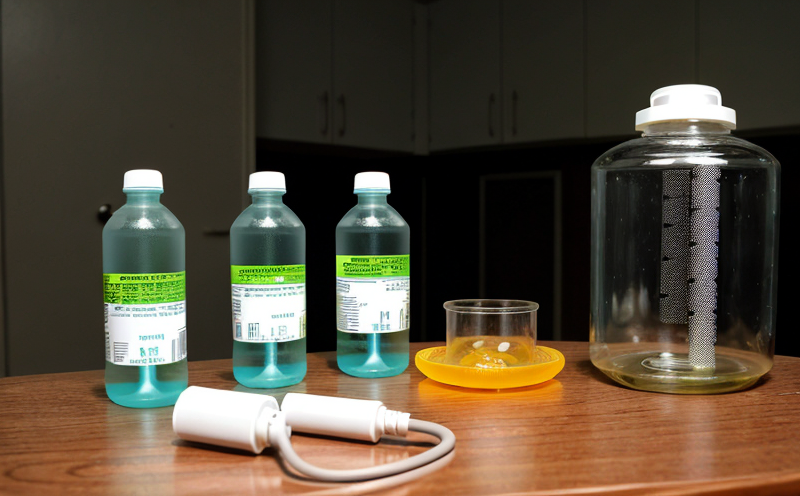EPA 934 Lead 210 Determination Test in Water
The EPA Method 934 is a critical analytical procedure designed to determine lead-210 (Pb-210) in water samples. This test is particularly important for environmental monitoring, especially in the context of radioactive contamination. Lead-210, an alpha-emitting radionuclide produced by the decay of uranium and thorium series isotopes, can accumulate in aquatic environments, posing potential health risks if not properly managed.
Accurate measurement of Pb-210 concentration is essential for regulatory compliance, environmental assessment, and public health protection. The EPA 934 method involves several key steps: sample collection, filtration, digestion, and final analysis using liquid scintillation counting (LSC). This process ensures that the lead-210 present in water samples can be accurately quantified.
The test is widely used by regulatory agencies such as the Environmental Protection Agency (EPA) to ensure compliance with drinking water standards. The method's precision and accuracy are crucial, as even small variations in Pb-210 levels could indicate significant environmental changes or potential health hazards.
Understanding the context of EPA 934 is important for various stakeholders, including quality managers, compliance officers, R&D engineers, and procurement specialists. The method's application in water testing highlights its importance in ensuring safe drinking water and protecting public health. By adhering to this standard, laboratories can provide reliable data that informs policy decisions and environmental management practices.
| Sample Type | Expected Pb-210 Range (Bq/L) |
|---|---|
| Groundwater | 0.1–1 Bq/L |
Industry Applications
The EPA 934 Lead-210 Determination Test is crucial in various sectors, including environmental monitoring, public health, and water treatment. Regulatory compliance is a key driver for the application of this test. Below are some specific applications:
- Monitoring radioactive contamination in drinking water sources.
- Evaluating the impact of industrial activities on surface water bodies.
- Assessing groundwater quality to ensure compliance with regulatory standards.
- Supporting research and development in environmental science for better understanding of radionuclide behavior in aquatic systems.
Why Choose This Test
- The EPA 934 method is recognized by international standards such as ISO, ASTM, and EN, ensuring reliability and accuracy.
- This test provides precise quantification of Pb-210 in water samples, essential for regulatory compliance and environmental safety.
- Comprehensive sample preparation ensures accurate results, reducing the risk of contamination or analytical errors.
- The use of liquid scintillation counting technology guarantees high sensitivity and specificity.
Environmental and Sustainability Contributions
The EPA 934 Lead-210 Determination Test plays a significant role in environmental protection by providing accurate data on radioactive contamination levels. This information is vital for implementing effective mitigation strategies, ensuring public health safety, and promoting sustainable water management practices.
By adhering to this method, laboratories contribute to the overall effort of maintaining clean and safe water resources. The test supports the development of policies that prioritize environmental stewardship and public welfare. Through its application, stakeholders can make informed decisions that lead to healthier ecosystems and more resilient communities.





